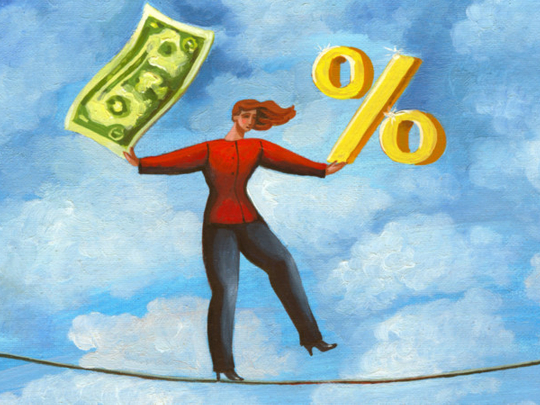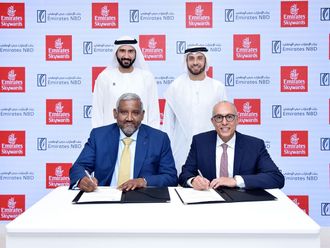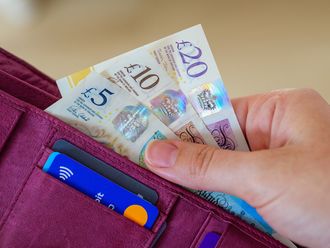
Free money is immediate gratification for customers and, in the longer term, lowers the price of purchases when cash is returned. Whether you are shopping while on vacation, purchasing expensive gifts for loved ones, buying day-to-day groceries, paying for utility bills or tuition fees, most banks in the UAE promise to refund a percentage of what you spend as an incentive for you to use their credit cards.
“All customers can benefit from cashback and [they are] all eligible for it. Customers don’t have to be big spenders to get rewarded,” says Shehzad Hameed, Head of Retail Products, Middle East, North Africa and Pakistan, Standard Chartered Bank. “With a standard reward-point-earning credit card, cardholders may need to consistently spend in order to see any tangible benefits whereas a cashback card is relatively simple. Spend, earn cashback and then spend the money. Customers who benefit from these programmes are typically those who are on limited monthly budgets.”
Cashback sounds straightforward and appealing, but it’s not always simple — you must look at the details of the offers before you commit.
The concept
A cashback programme allows card users to earn money for their purchases, where the bank will pay them a small percentage back as a reward for spending, based on the scheme chosen. Dr R. Seetharaman, Group CEO, Doha Bank, explains that offers may vary based on duration of validity, merchant type, location of spend, amount, cashback rate, method of crediting, etc.
For example, some banks may return money to cardholders according to where they spend such as 5 per cent cashback on all international transactions and 3 per cent on domestic purchases. Others may promote merchant offers, giving back 1 per cent on supermarket purchases, 2 per cent on department store buys, 3 per cent on spends at fuel stations and so on.
What it costs
Annual fees for cashback cards range from Dh200 for a Majid Al Futtaim Finance Najm Silver Card, which offers 3 per cent cashback at Carrefour and 1 per cent everywhere else, to Dh750 for a Barclays Barclaycard Edge, which returns 10 per cent cash to users when dining out in the UAE. Cashback cards without annual fees are also available from banks including RAKBANK and Mashreq.
Schemes
Cashback schemes differ from bank to bank, with some financial institutions offering a flat percentage on the amount spent as a reward and others setting tiered rates or incentives based on what you spend and where you spend it.
Seetharaman says, “In a flat-rate scheme, cashback is calculated at a fixed rate, irrespective of the amount spent.” For example, 1.5 per cent may be given as cashback on purchases worth Dh1,000 and above.
“In a tiered-rate scheme, cashback is calculated at different rates, based on the amount spent, i.e., if cardholders spend more, they earn cashback at a higher rate,” says Seetharaman.Instances include 1 per cent cashback on purchases up to Dh7,000 and 1.5 per cent back on purchases between Dh7,001 and Dh15,000.
He adds, “There are also location-based rates, which mean that the cashback is calculated on different rates based on the geography of the transaction. So if the transaction happens locally or internationally, cashback will be calculated at different rates.”
Amount ceiling
Banks may put a cap on the amount a cardholder receives as cash with the aim of serving more customers and controlling costs at the same time. Mohammad Jamil Berro, Group CEO, Al Hilal Bank, says cashback amounts will always be capped and offered up to a designated amount. “This limits the bank’s exposure on cashback payments, as it is an expense for the bank. For example, a spend between Dh5,000 and Dh10,000 and get up to 1 per cent cashback offer [may be] capped at Dh75. This means that even if a customer spends Dh10,000, they will receive only Dh75 when at 1 per cent he/she should have received Dh100,” he adds. This designated amount clause can be a confusing feature that must not be overlooked.
Redemption pattern
Monetary discounts are the main benefit of owning a cashback credit card, so it’s necessary to know how and when the money is rebated. Seetharaman says clients can redeem their cashback either by receiving direct credit onto their cards or by asking for the cashback in the form of cheques.
“The timing of receiving cashback is dependent on each bank — some redeem it every month (or quarter), some upon receiving a request and some at the end of a campaign,” he adds.
Prohibited areas
Watch out for transactions that do not qualify for cashback rewards. Seetharaman says that generally, cash returns are not offered on transactions such as cash withdrawals, balance transfers, EMI transactions and bank fees.
Conditions apply
Cashback rewards lure users, but to maximise benefits, look at interest rates and other factors hidden in the small print.
Berro says cashback offers will always have conditions attached, i.e. minimum spend requirements offered as spend x amount locally and spend x amount overseas. “Also, the minimum payment has to be made by the statement due date to receive the cashback,” he says.
“Interest rates charged by banks are more than 3 per cent per month on credit cards, so cardholders should make sure that they do not get carried away with the cashback offer and not settle all outstanding dues, which will lead to interest payments of 3 per cent per month. Moreover, banks also charge a mark-up on overseas transactions, which should also be monitored,” adds Berro.













